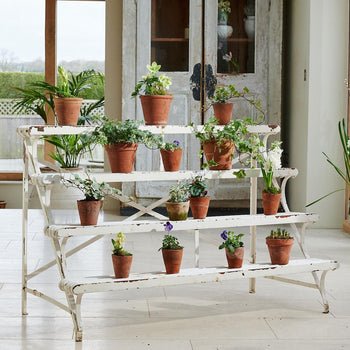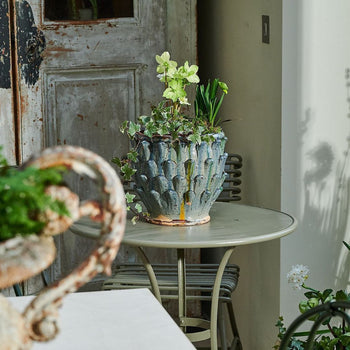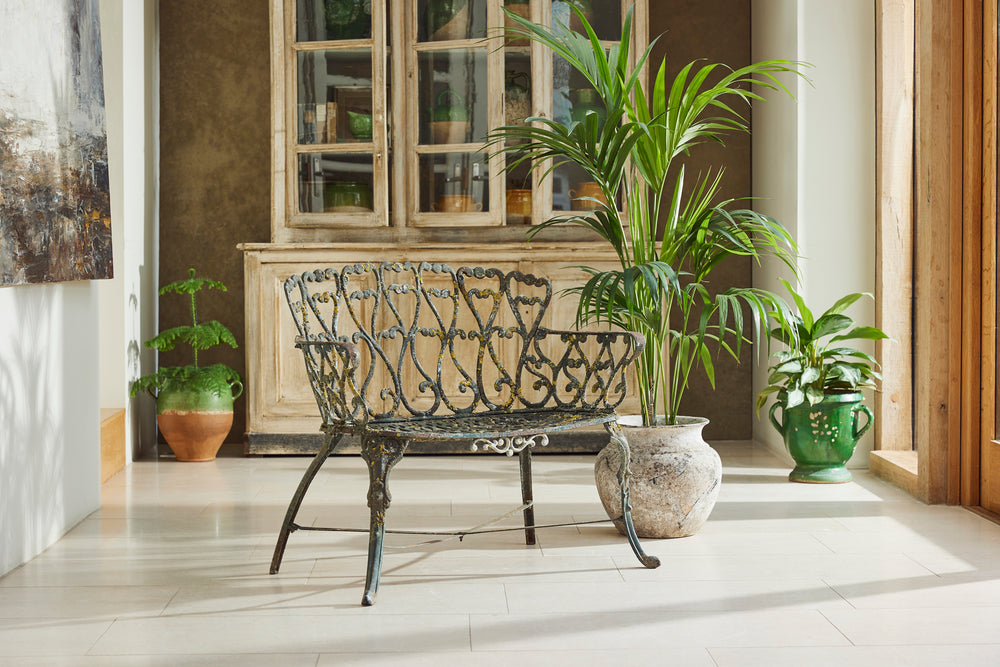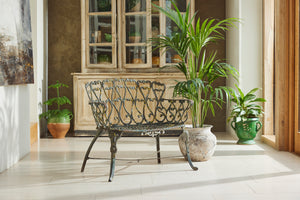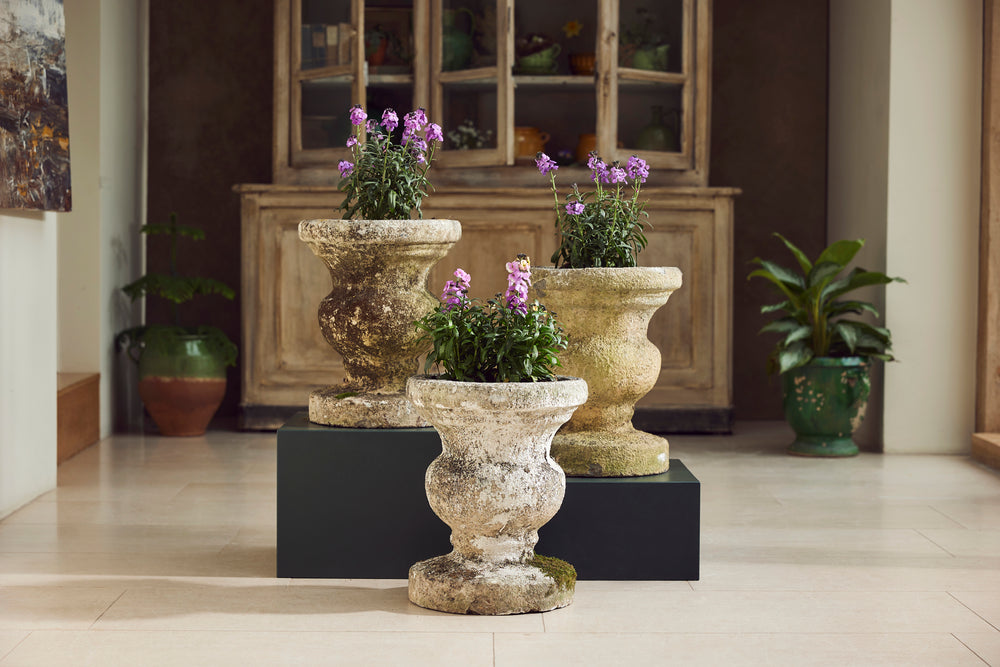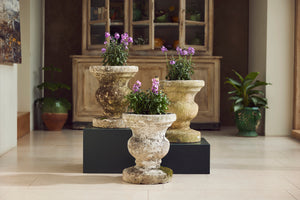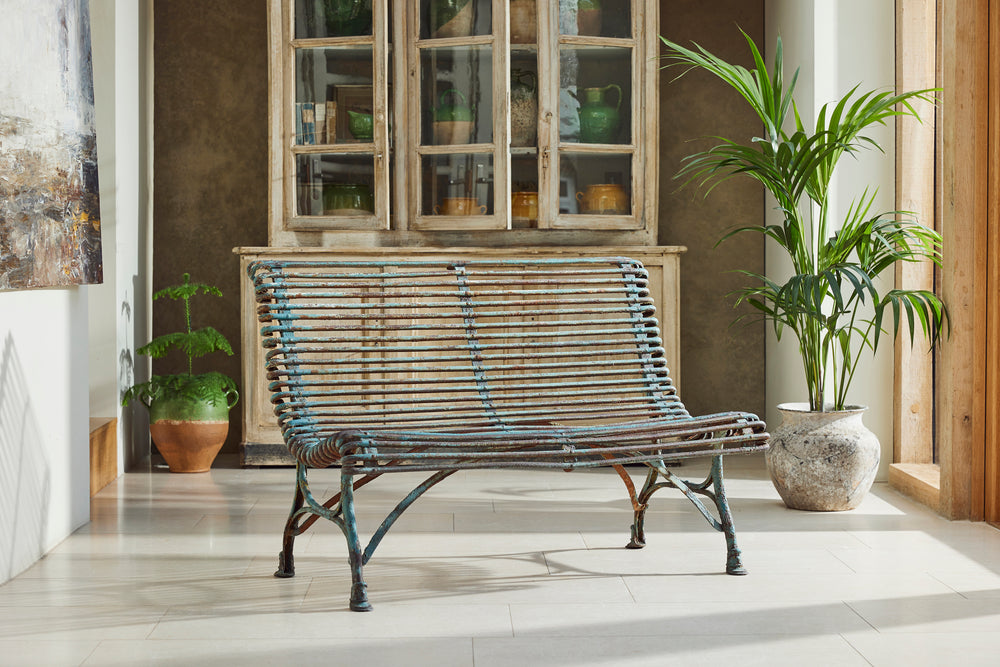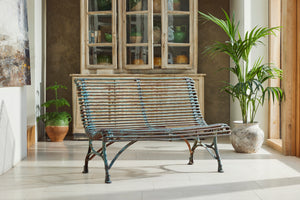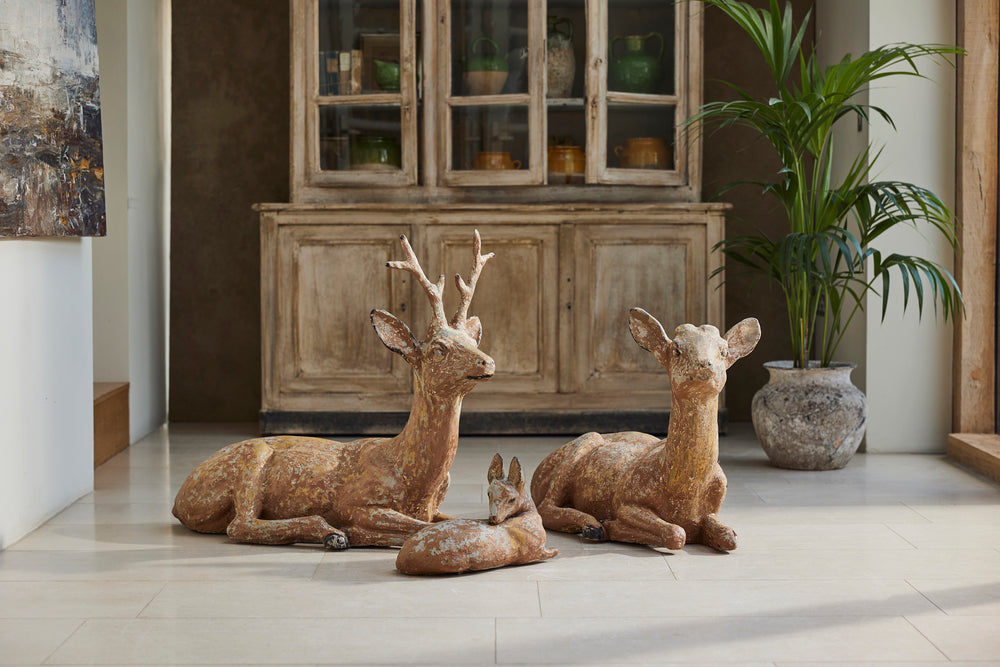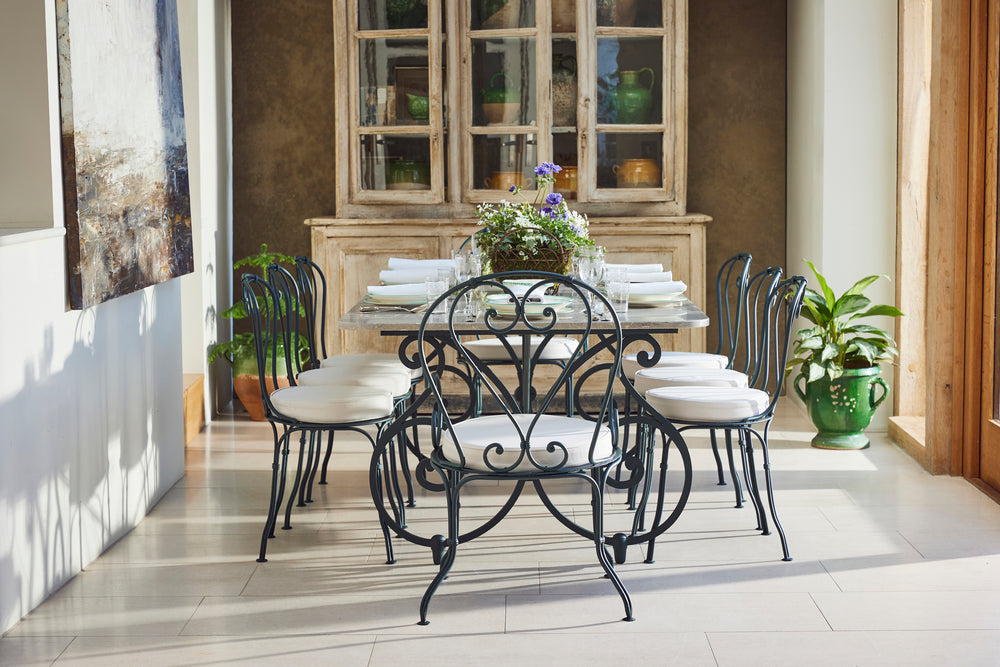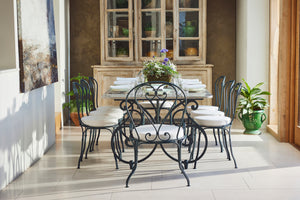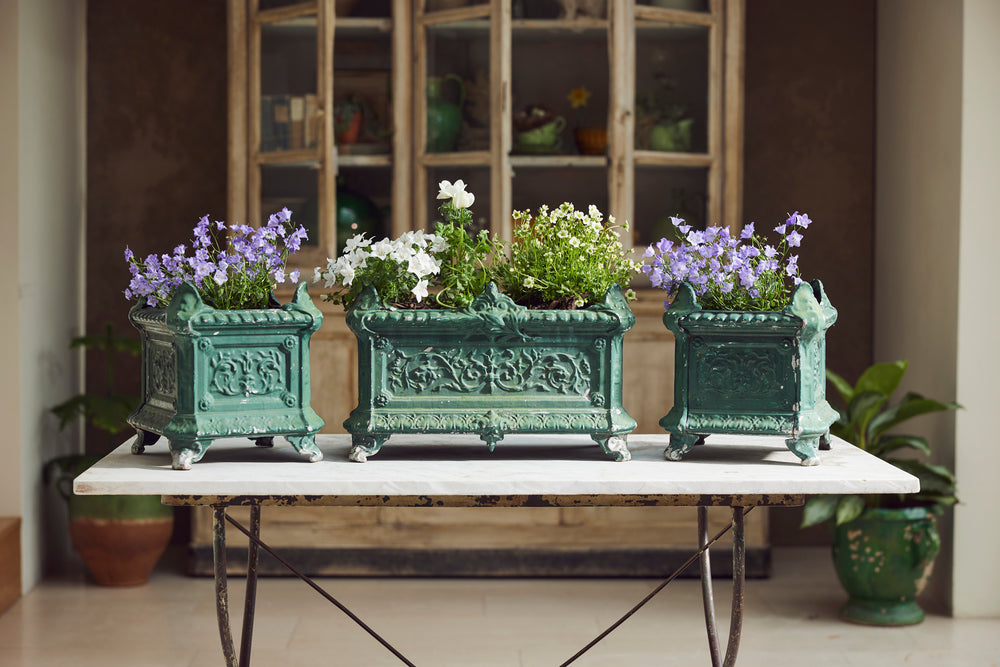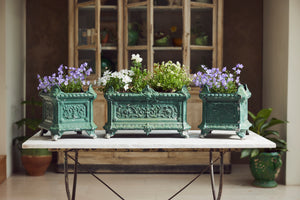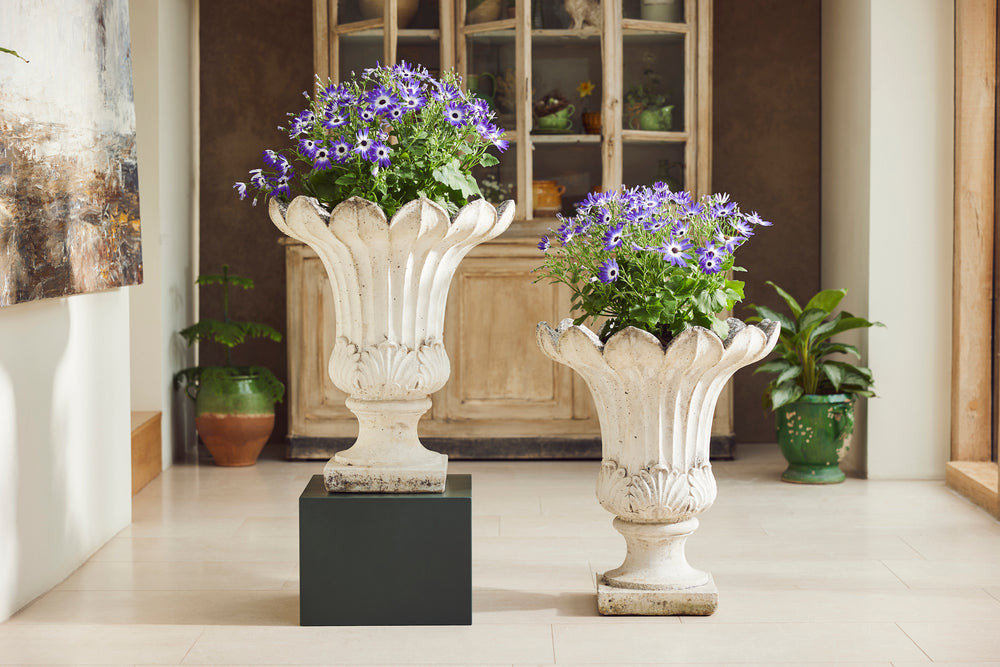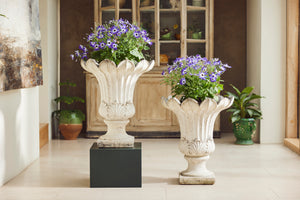The combination of craftsmanship and materials can provide valuable insights into the history and authenticity of an antique. Many antiques were often crafted by hand using traditional materials. As time passed, different techniques and materials were introduced, making it possible to identify the era in which a piece was created. For example, genuine antiques from the 18th and early 19th centuries often lacked symmetry, since they were not produced by machines. Therefore, it is crucial to understand how these techniques evolved and how the materials changed over time to accurately determine the age and value of an item.
Read on to discover what specific craftsmanship and materials can tell us about an antique.
General Metalwork

When assessing most metal garden antiques, the primary consideration revolves around the effects of weathering and oxidisation. Metal garden antiques such as benches were often painted to protect from the elements. As paint peels due to weathering, you can often see layers of different coloured paint beneath the top surface right down to the bare metal. This can be a great way to identify the age of the antique. Furthermore, when a metal item does lose its paint, depriving it of protection from the elements, oxidation occurs, leading to the development of rust.
Patina is also something to look out for. Enhanced by the presence of moss and algae, and influenced by the forces of wind and rain, patina is a uniquely appealing aesthetic that cannot be replicated.
Wrought Iron

Wrought iron is obtained from smelting crude iron. The term ‘wrought’ means the metal is able to be hammered, rolled and worked while hot. Welding was not commercially viable until the late 1930s. All wrought iron furniture is forged or riveted together therefore pieces that are advertised as pre-dating the 1930s will not have welding in the design.
Cast Iron

Cast iron, classified as iron-carbon alloys, is characterised by a carbon content exceeding 2%. The quality of the casting is key to determining the authenticity of cast iron items. Better casting techniques and moulds produced much finer, sharper and more consistent detail. Pieces would go through a finishing process, unlike many reproductions which are sold straight from the mould. Make sure to inspect for makers’ marks and serial numbers as these were used by the big foundries such as Coalbrookdale in the UK and Val D’Osne in France.
Lead

Lead is classed as a heavy metal which has traditionally been used since the 18th century for statutory planters and urns. It is strong, robust and heavy so perfect for the garden. This metal is cast in moulds and, where necessary, individual elements welded together.
As with all cast products, the quality of the moulds and the finishing produces the finest and sharpest detail. Old lead lightens in the sunlight and darkens in patches due to weathering so look out for a dark blue-grey patina.
Natural Stone

Natural stone has been used for centuries to hand carve statues, benches, urns and architectural elements for the garden. Stone reflects unique character and stability. Variations in natural stone’s broad range of colour, pattern, and texture are visually interesting and impossible to replicate. When these items come to market, they are costly and owing to the cost of production, rarely reproduced.
Composition Stone

Composition stone, also known as cast stone, is manufactured to replicate natural stone. It is typically made from fragments of natural stone which have been mixed with cement allowing the mixture to be poured and shaped as required in moulds.
The casting is often very sharp and with weathering it is often difficult to tell from natural stone. The one sign that the item has been cast in a mould is that there will usually be a few air holes in the surface of the stone.
Concrete

In the 20th century, garden ornament pots and planters were mass-produced cheaply using concrete. This hard-wearing material means a 50-year-old, well-weathered piece can still look very attractive, and close to its original shape.
Concrete often lacks definition and detail, there are usually a lot of air holes in the surface of the concrete that show it is not stone. The weight is also a giveaway as concrete is about 50% heavier than cast stone and 65% heavier than carved stone.
Exemplary craftsmanship
Understanding the history and authenticity of antiques involves a close examination of craftsmanship and materials. We hope this comprehensive guide will help you to not only identify the authenticity of antiques but also enhance your appreciation for the history and craftsmanship.





